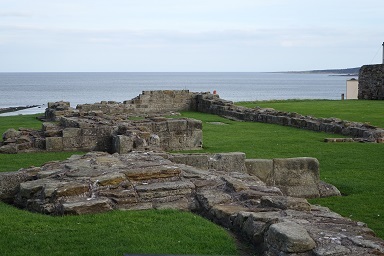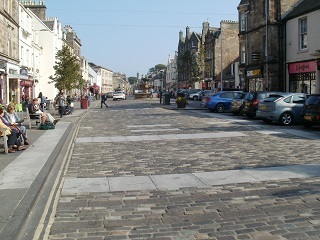Church of St Mary, Kirk Hill
Church of St Mary, Kirk Hill
Kirk Hill (or Kirk Heugh as it is sometimes called) has a long history of human activity. Archaeologists have found evidence of prehistoric burials at this site, perhaps dating from as long ago as 500 B.C. There are also some signs of early metal working. In the mid twelfth century a church dedicated to the Virgin Mary was established here. The new church housed a community of holy men known as "Culdees" (a term derived from the Celtic phrase Ceile-De or "friend of God"). The Culdees had previously served the shrine of St Andrew but were pushed out from this role by the foundation of an Augustinian monastery at the Cathedral. During the later Middle Ages St Mary's was a royal chapel and enjoyed the patronage of successive Scottish kings. The church was still functioning at the Reformation, when several of its priests were prosecuted for refusing to convert to Protestantism.
Street View
Additional Information
Location: To the north of the Cathedral precinct. Date Built: Twelfth and thirteenth centuries.
Relations between the priests at St Mary's Kirk Hill and the cathedral's canons were often strained. There were bitter arguments about whether the clerics at St Mary's had a right to help elect the bishop of St Andrews.
St Mary's was a collegiate church - meaning that it was staffed by a community of priests who decided their affairs as a group (or chapter).
During the mid-thirteenth century one of the priests at St Mary's, Richard Vairement, wrote a history of Scotland. Vairement's book has since been lost, but it is thought to have influenced several later medieval authors.
St Mary's is thought to have stopped being a royal chapel in the early 1500s when the Chapel Royal at Stirling was established. However, some of the St Mary's priests continued referring to their church as a royal chapel for several decades after this.
Regular worship at St Mary's ended at the Scottish Reformation. The church buildings are believed to have been demolished shortly afterwards - leaving only the foundations we see today.
The coastline near St Mary's has been severely eroded. A number of old graves have been lost because of landsides. Apparently at one stage in the nineteenth century it was possible to see bones sticking out of the cliffs.

